
Find out the average home window tinting cost, key price factors, and ways to save. Get transparent estimates for your window tinting project.
Time to bring a whole new meaning to "window shopping"


Window film comes in rolls and sprays and adheres to existing glass.
Tinted glass is permanent; additives are added during the manufacturing process.
You'll pay more for tinted glass than window film, but it’s often more effective.
From blocking UV rays to offering a bit more privacy from the neighbors, window film and tinted glass can transform your home. You'll find many types of window tints on the market, including glass tinted during the manufacturing process and films that are easy to install on your own. But, which is the better solution? Let's compare window film vs. tinted glass so you don't end up throwing money out the window.
| Window Film | Tinted Glass |
|---|---|
| Easy to DIY | Requires Pro Installation |
| Temporary | Permanent |
| Easy to Layer | Very Durable and Efficient |
| Ideal for Existing Windows | Ideal for New Windows |
The term "window film" refers to thin layers of film installed on existing panes of glass. Window films filter out specific sun rays, tint your window for more privacy, or diminish glare at the peak of an afternoon. Window films traditionally come in rolls or sprays and are often considered temporary. You can either add the film yourself or hire a professional to tint your glass with window film.
Tinted glass, on the other hand, includes additives to the glass during the manufacturing process. Similar to window film, tinted glass can also block out heat, UV rays, and the views of nosy neighbors. However, the tinted glass is permanent, often highly effective, and requires professional installation.
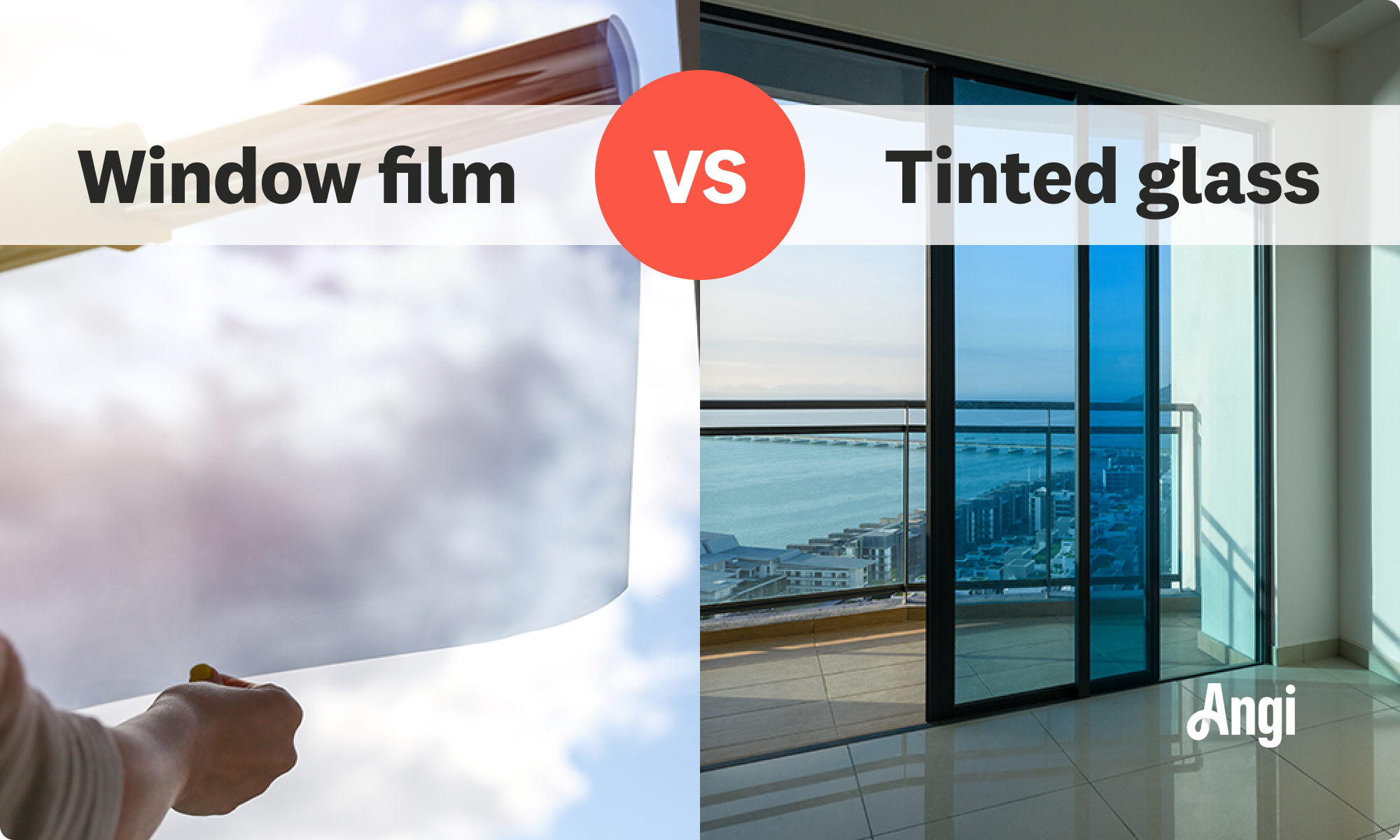
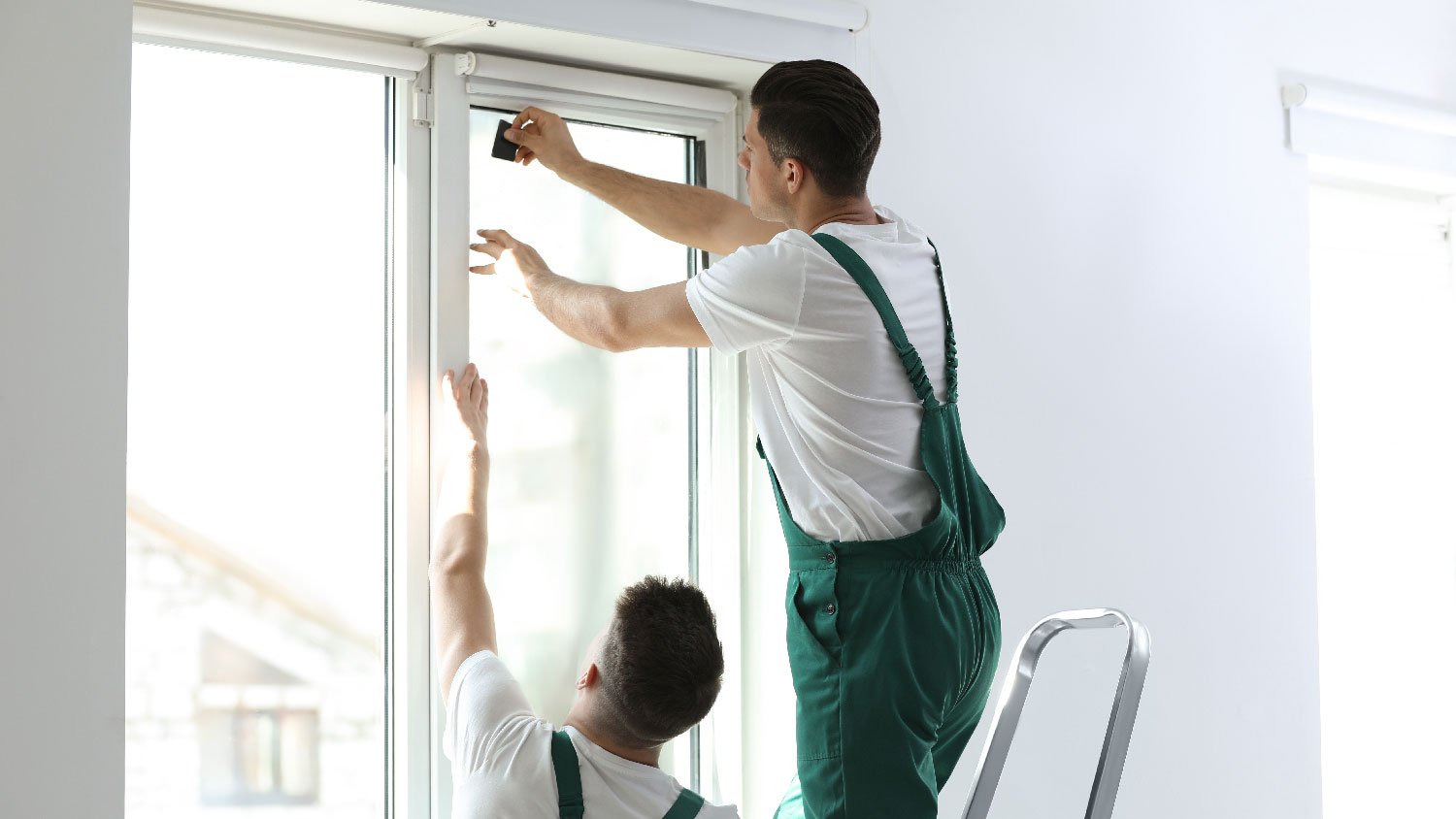
Window film refers to a wide range of glass covers that filter light coming through a window. In residential homes, some window film can help lower utility bills by blocking out specific solar rays or protecting your floors and furniture from sun damage. Window film also enhances privacy by adding a tint, reflection, or pattern that keeps others from seeing in your home. While most films do not affect how well you can see out the window, some tints can noticeably lower visibility.
Applying a window film yourself can take as little as 30 minutes, though a local professional will charge between $5 and $10 per square foot to make sure it goes on smoothly. Films are easily adjustable for different window sizes and varieties and can usually be removed without damaging the glass. That being said, most window films last without peeling between five and 10 years—or up to 20 years in some cases.
| Pros | Cons |
|---|---|
| DIY-friendly | Breaks down faster |
| Low costs | Less effective |
| Versatile | Not ideal for double-panes |
| Easy to layer |
Best for: Existing windows that require added privacy or insulation
Window film is the go-to option for existing windows. Replacing window glass costs an average of $375 while installing window film yourself can cost as little as $5 to $10 per square foot for materials. Window film is also highly customizable without adding too much to the cost. Some window films allow layering, incorporating the properties of both privacy and UV protection, for example. You can also remove the film down the line if a better product comes on the market.
At the end of the day, window film is a temporary fix. Lower-cost or poorly installed films can pull away from the glass or scratch. Many films will not offer the same insulation or savings as tinted glass, particularly when it comes to low-E windows. Window film also does not translate to all types of windows. Double and triple-pane windows are harder to coat with a film, for example.
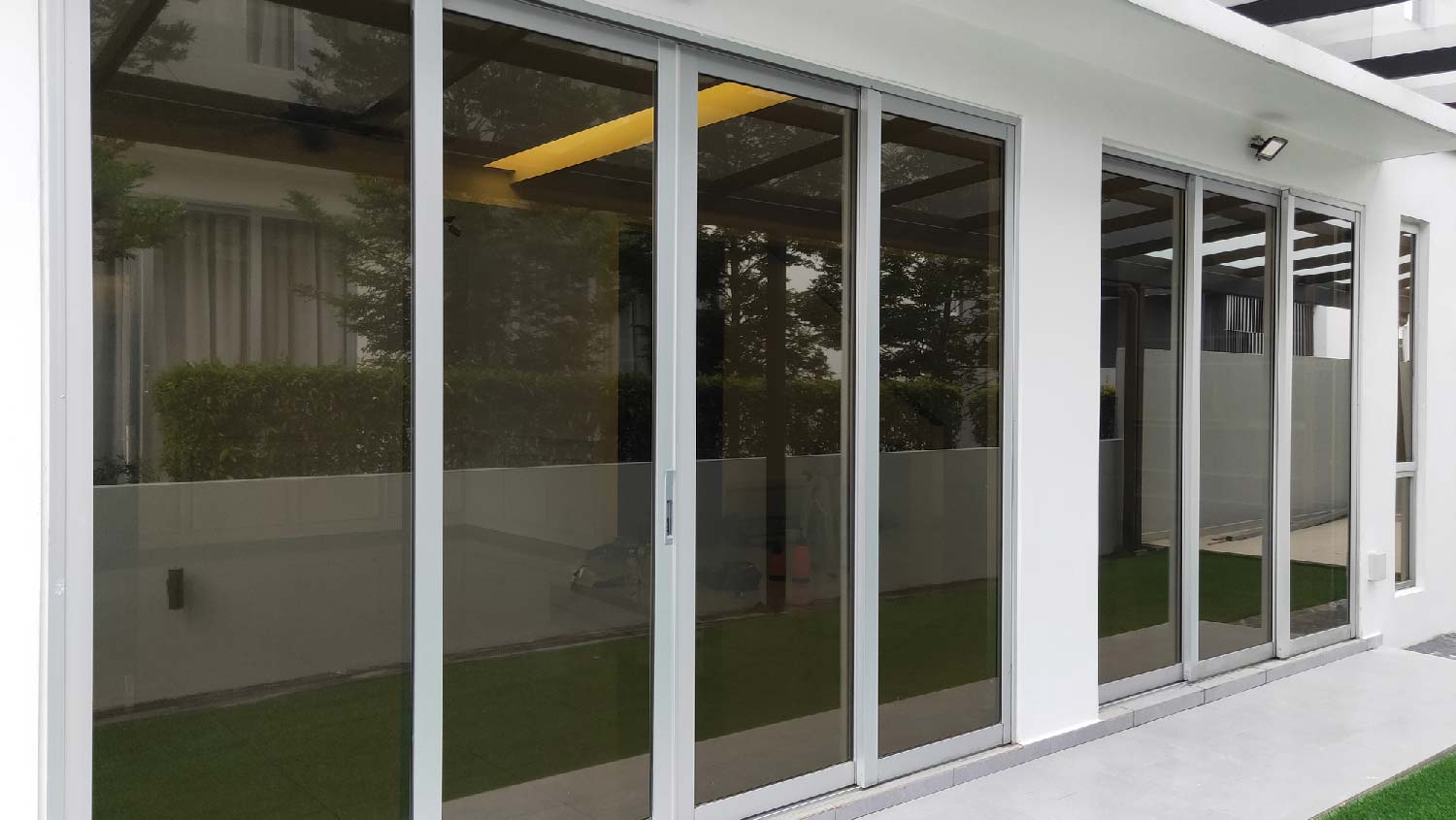
Tinted glass comes manufactured with a range of qualities that also block out UV rays or heighten the privacy of a space. While window tinting can be decorative, it mostly offers practical perks similar to the window films above. You can enhance privacy and security on the first floor of your home, lower your cooling bills with low-E glass, or even choose glass that will lower the glare in your living room as the sun goes down.
Tinted glass stands out because it will not fade or peel off over time. If you're preparing to replace window or window glass, buying tinted glass could be a good investment.
| Pros | Cons |
|---|---|
| Lasts longer | Not as DIY-friendly |
| More efficient | Costs more |
| Looks professional | Harder to repair |
| Fits all window designs |
Best for: Replacing new windows with energy-efficient options
Tinted glass will last an average of 30 years when properly maintained. There is no concern about film peeling or getting scratched as you open and close the window. Tinted windows also include some highly sustainable options, such as low-E glass. While low-E windows can cost up to $730 per window—as opposed to just $150 for up to 5 windows with low-E film—this type of glass can lower your utility bills.
There is no question that you'll pay more for the materials and installation of tinted glass compared to window film. Installing window glass yourself is not often advisable on your own either. And while it's less likely to chip, you'll spend much more replacing or repairing the window compared to window film.
A new window tint will take on average one to two weeks to fully cure. During this time, follow the manufacturer's guidelines closely when it comes to cleaning and using the window.
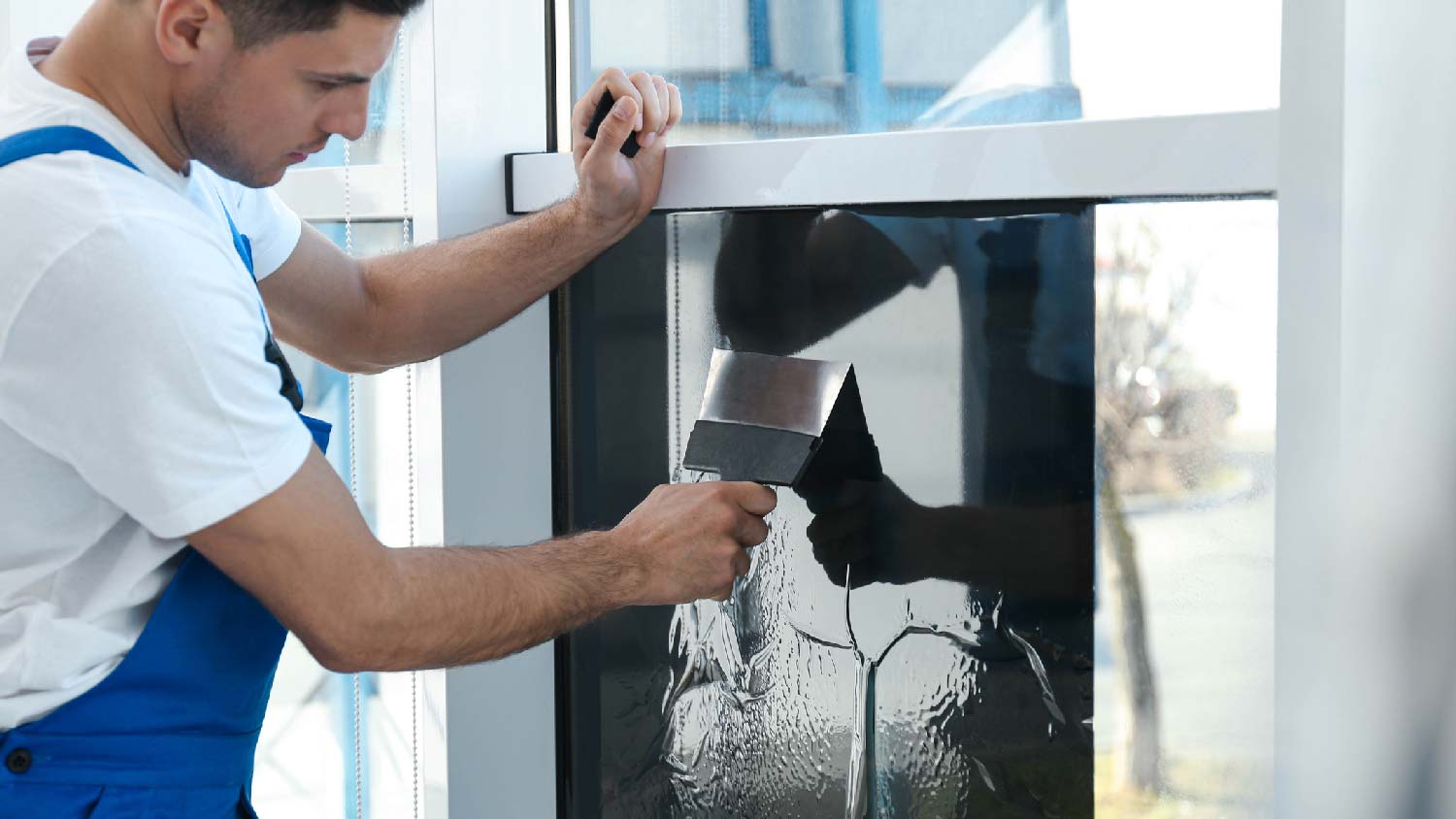
How do window film and tinted glass stand up head to head? While their benefits often depend on whether you're planning to install new glass, there are some obvious winners in each category.
While this is a tight call, tinted glass will look more natural and professional than most window films. Since there is a smaller chance of poor installation, tinted glass will look more uniform. On the other hand, we should mention that window film's appearance is more flexible.
When it comes to price, window film wins by a mile compared to tinted glass. Not only is the film itself often more cost-friendly, but it's less expensive to install as well. Additionally, changing out the film in the future costs less as well.
The only caveat here is long-term savings. While window film can keep cold drafts out, keep in mind that it is not as effective as low-E tinted glass and may even void the warranty on your window itself.
With about double the lifespan of window film, tinted glass is the way to go if you plan to keep the same window glass feature for decades. For example, swapping out all your home's windows for smart glass or low-E glass is an investment that can change the overall efficiency of your home.
You can install most window films on a weekend afternoon without a lot of fuss. That being said, it does take patience and a steady hand. For the most efficient and professional-looking results, hire a local home window tinting team to install window film.
All in all, tinted glass is typically highly durable. Many types of tinted glass—particularly low-E glass—feature additional qualities that repel water, sand, and dirt. Window film, meanwhile, has a habit of losing its adhesive over time and peeling at the edges, especially if it’s not installed correctly or is a lower-end brand.
From average costs to expert advice, get all the answers you need to get your job done.

Find out the average home window tinting cost, key price factors, and ways to save. Get transparent estimates for your window tinting project.

Discover window security film installation costs. Learn about average prices, cost factors, and ways to save on your home security upgrade.
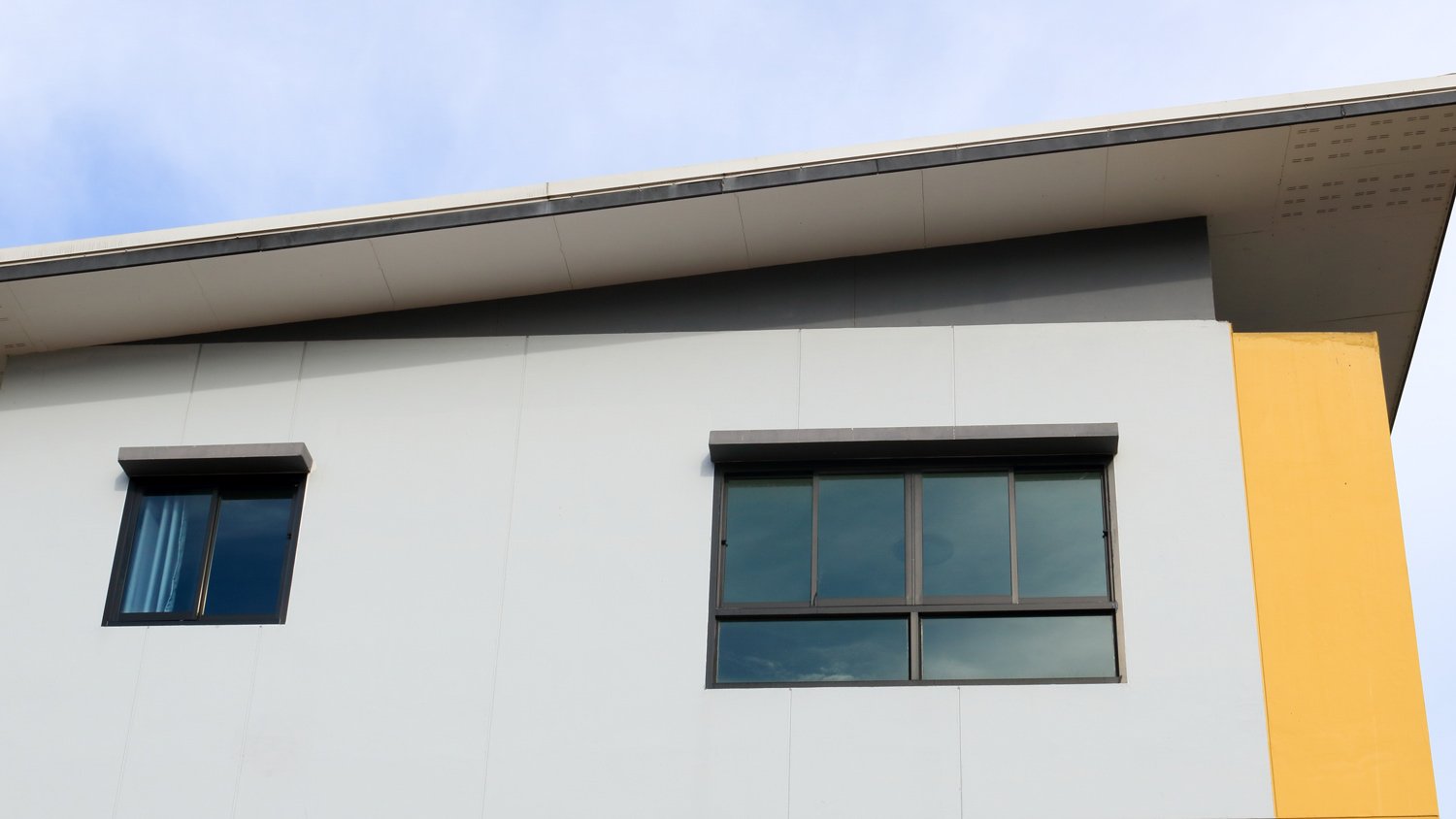
Our guide walks you through how to remove window tint from home windows, including peeling the film and wiping away the adhesive.

Window tints can increase your home's privacy, efficiency, and comfort. Here are eight types of window tints and the pros and cons of each.

Can I tint my house windows? Home window tinting is a small upgrade that can yield major benefits. Here’s everything you need to know before taking the plunge.

Unleash your inner DIY maven and learn how to tint windows at home. We share the best ways to achieve flawless results. Grab your squeegee!